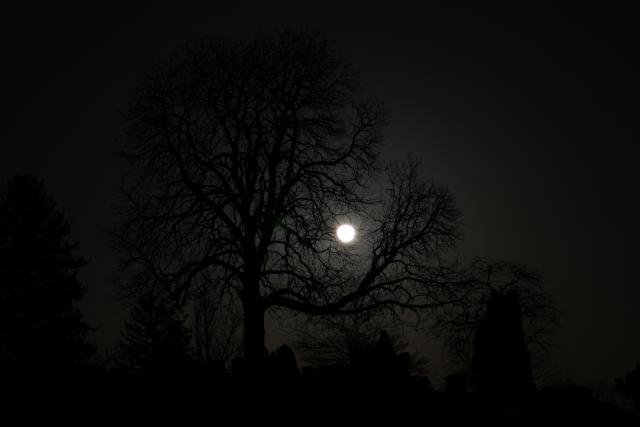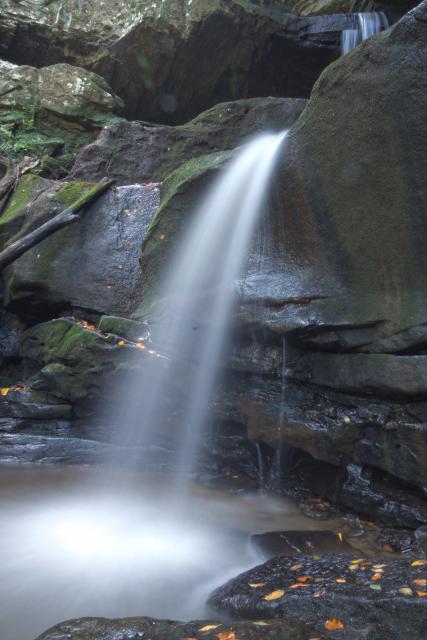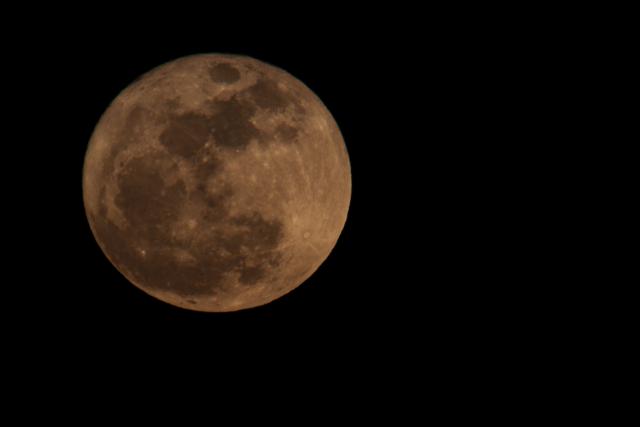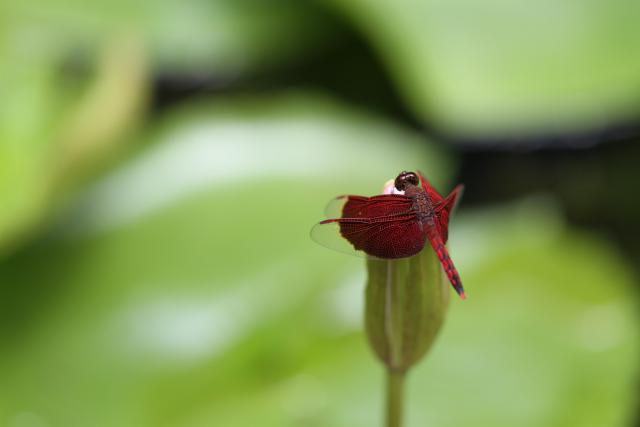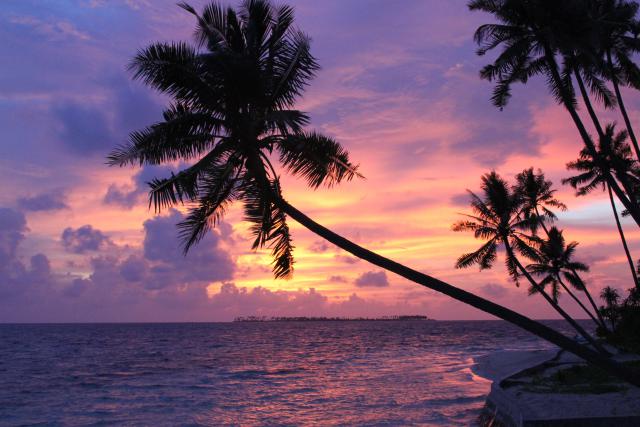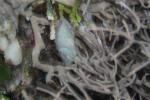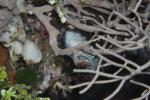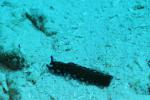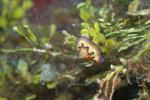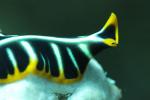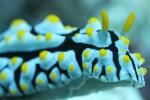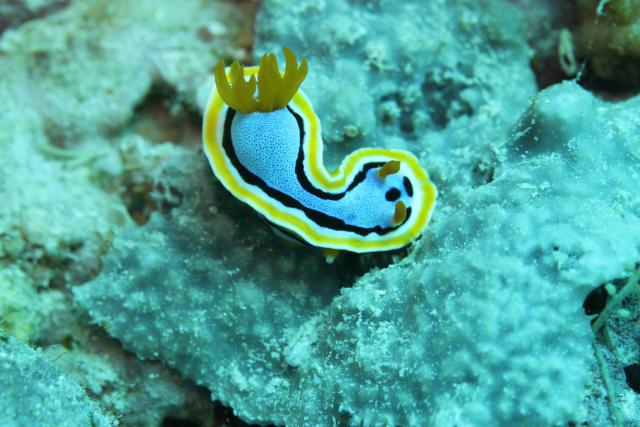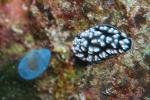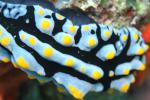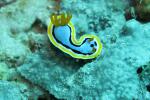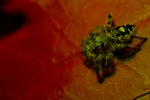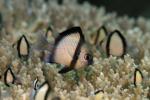Tree Framed Full Moon
ktuli — Thu, 03/31/2011 - 19:33
Here's another shot from the perigee full moon from a couple weeks ago. After taking the shots or the moonrise up on Mount Washington, we stopped off at a nearby cemetery to see what kind of shots we could find there. It was really cold that night, so I rattled off a couple quick shots and then headed back home for some hot cocoa.
Technical Data: Canon EOS 7D, Canon EF-S 18-55mm f/3.5-5.6 II at 55mm, 2.6 sec at f/5.7. ISO 200. No post production.
Why This Photo: With the large full moon, Anya suggested some spooky shots in the cemetery. Once I saw this tree with that distinct low limb, I decided to frame the moon in the middle of the branches.
What Works: The dark exposure adds to the spooky feel of the scene, and the branches of the tree wrapping the moon completes that sense.
What Doesn't Work: The moon is a bit over-exposed and becomes a harsh featureless spot instead of an ominous moon. The composition is lacking a bit - the evergreen bush on the left is pretty unbalanced, and the moon is a bit too close to center. Perhaps some post production cropping could help the cause.
Thanks for stopping by today.
- Bill
HDR: McConnell's Mill Waterfall
ktuli — Wed, 03/30/2011 - 17:48
As promised many, many ages ago, I've finally processed that set of waterfall photos into an HDR image.
I used a freeware program called Picturenaut to produce the final HDR image. In the end, I like the image but wonder if the HDR was even worthwhile in this particular case (or given the range of exposures I used to built it).
After completing the HDR, here are my thoughts on the results:
- I should have cleaned up the scene some more - at this point, I find all the dead leaves distracting, and a nice clean rock and water scene would have been more pleasing.
- I need to pay more attention to the lens flares and water droplets on the front of the lens because they might not have been distracting in the original shots (and probably not even noticed on the LCD on the back of the camera), but they definitely are noticeable now.
- I should have selected a wider range of exposures to use for this kind of HDR set. Particularly, I should have explored the darker end of the set more - perhaps expanding down a further stop or two.
- I should have figured out what that spot in the middle of the frame was.
All in all, I am actually pretty pleased.
I've seen so many HDR images that have horrible halos around everything that they looked like you were looking at the scene through some crappy 3D vision glasses. As I'm sure you know by now, I am not a huge fan of post production work. I like to get the shot right once in the camera and leave it at that. I'm slowly coming around, but I still don't want to look at an image and tell it has been so overworked and couldn't possibly have come from a camera directly. It works for some folks, and sometimes it looks nice, but it just isn't for me.
Remember to stop back and check out the original post to get a bit of comparison, then drop me a comment and let me know what you think.
- Bill
Wakatobi: Fire Dartfish
ktuli — Wed, 03/23/2011 - 20:59
Alright, back to the dive photography (how I wish that meant back to taking dive photos!) to try and get back into my routine of regular posts.
Today's little guy (or girl - can tell for certain what sex it is) is a Fire Dartfish (Nemateleotris magnifica). They are small (about three inches max) and very skittish, so getting close to fill this much of the frame with one is a bit of a challenge.
Technical Data: Canon EOS 7D, Canon EF 100mm f/2.8L Macro IS USM, 1/130th sec at f/8. Image Stabilization on. ISO 800 (Auto). Ikelite Housing and Port with Ikelite 161 Strobe in TTL Mode. Auto-smartfix and brightness reduced 10% in Photoshop Elements 8.0
What Works: The best part of this photo for me is how the fish jumps off the screen - there is just a three dimensionality to the shot that really pops! The colors of the dartfish are spot on, and the depth of field provides a nice soft background with just enough detail to show some of the liverock in the background.
What Doesn't Work: First, the dartfish itself is a bit washed out - those bright white scales are just so easily over-exposed. Additionally, the positioning of the fish in the frame is less than ideal with it looking out of the frame.
What do you think? Drop me a comment and let me know.
- Bill
Perigee Full Moon
ktuli — Mon, 03/21/2011 - 20:55
Well, as if it wasn't obvious, I continue to be lazy with posts. However, I did make sure I got out this weekend to get some photos, so that's at least a step in the right direction.
In case you didn't hear, this past Saturday night was a Perigee Full Moon, which basically means it was the largest and brightest possible moon because of its closeness in its orbital path.
Anya and I went up to Mt Washington above the Pittsburgh skyline to catch the moon as it rose to the east. My hope (and apparently the hope of many other photographers who swarmed the overlooks) was to capture a looming large full moon over the iconic skyline. Unfortunately, things didn't work so well in that respect, and after frantically switching lenses a couple times, I settled on hooking up the largest rig I could and captured the following...
Technical Data: Canon EOS 7D, Sigma 150-500mm f/5-6.3 APO DG OS HSM with Kenko Teleplus PRO 300 "DG" AF 2x Teleconverter at 1000mm, 1/100th sec at f/12.9. ISO 800. Dolica AX620B100 tripod and Satechi TR-A Timer Remote Control. No post production. Mt Washington Overlook, Pittsburgh, PA.
At full size, you can even see that the moon is not perfectly round, and you can see the difference in topography along the perimeter of the moon. I also took some photos in RAW format so I can begin working with photographs in that respect, but I have not yet done so, so this jpg version will have to suffice for now.
- Bill
Bali: Red Dragonfly
ktuli — Tue, 03/15/2011 - 19:44
Technical Data: Canon EOS 7D, Canon EF 100mm f/2.8L Macro IS USM, 1/790th sec at f/2.8. Image Stabilization on. ISO 200 (Auto). No post production.
Why This Photo: These beautiful red dragonflies were flying around the Puri Santrian hotel among the many water gardens on the grounds. As soon as I saw them, I knew I had to try out the new macro lens with them.
What Works: The off-centered dragonfly is in perfect focus (looking at the fullsize version reveals the intricate detail in the delicate wing. The extremely wide aperture of f/2.8 produces an incredibly soft bokeh background that has just enough shape to show the lily-pads that accompany this closed water lily bud.
What Doesn't Work: That same wide aperture that produced the soft background also produced such a narrow depth of field that the entire dragonfly is not in clarity. I feel this is ok to some extent, but wish that the dragonfly's body and head were in more clarity.
- Bill
Spring Buds
ktuli — Tue, 03/08/2011 - 20:28
Yeah - I am still struggling with that lack of motivation, so I'm going to take a little break from the Wakatobi photos for a little bit. I have been looking around at various photography challenge websites as a way to get some inspiration. I found one that was running with the theme of Spring (though I can't seem to find it again), so I grabbed the camera after I got home yesterday and headed out.
I went out with a specific shot in mind, and managed to actually come back with it...
 |
|
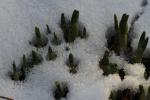 Camera Metered 1/130 sec at f/8 |
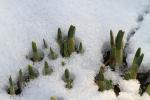 Manually "Over-Exposed" 1/40 sec at f/8 |
Technical Data: Canon EOS 7D, Canon EF 100mm f/2.8L Macro IS USM, 1/130th and 1/40th sec at f/8. Image Stabilization on. ISO 200 (Auto). No post production.
What is being illustrated here is the tendency for cameras to be "confused" by large amounts of bright or dark areas. This frequently happens in snowy scenes or bright sandy beaches being underexposed if you trust the camera's built in meter (ie: if you use auto mode, or even aperture or shutter priority, or even if you use the suggested exposure while in manual mode). In the case of snow, you end up with grey snow.
To fix this, you need to manually "over" expose the image. So yesterday, when I shot these buds bursting up through the snow, the camera's meter exposed the image a little dark and you can clearly see how the white snow appears grey. If you're using manual mode simply nudged the exposure time up a bit, or use your camera's exposure compensation feature, and the result is bright white snow.
I know... if you're like me, you're sick of seeing snow, but I didn't have any bright white tropical beach sand to illustrate this on, so hopefully this little sign of impending spring is enough.
Hopefully it also works to help get me motivated again. and I can get back to more regular posts.
- Bill
PS: Oh - I almost forgot, a similar phenomenon happens in a very dark scene with lots of black. The camera's meter will result in an exposure where the black begins to turn grey. The solution there is simply to "underexpose" a little, and you're all set.
Wakatobi: Sunsets
ktuli — Wed, 03/02/2011 - 21:41
I've been having some motivation issues with getting new posts written, so today I'm just dropping by to post a couple nice sunset photos. Enjoy.
Technical Data: Canon EOS 7D, Canon EF-S 18-55mm f/3.5-5.6 II at 18mm, 1/32 sec at f/8. ISO 320. No post production.
Technical Data: Canon EOS 7D, Canon EF-S 18-55mm f/3.5-5.6 II at 28mm, 1/32 sec at f/11.3. ISO 3200. No post production.
Hopefully I get my motivation back soon and can get back to posting regularly.
- Bill
Wakatobi: Cuttlefish!
ktuli — Sun, 02/27/2011 - 20:17
So one of the things that I really wanted to see while in Wakatobi was a cephalopod. So far on our two previous dive trips to Cozumel, we'd gotten close but my poor air consumption caused us to miss out. The first year, we were sitting on the boat for a good while before the rest of the group surfaced with stories of seeing multiple octopi. Last summer, the group all swarmed a small coral mound where an octopus was spotted, but my air was low and strong currents literally pulled Anya and I away from the opportunity.
For this trip, I was bound and determined to see some sort of cephalopod - an octopus, a squid, or possibly even a cuttlefish (I wasn't going to push my luck and expect to see a nautilus). The brochure for Wakatobi made it seem like we would see any (or all - except for the nautilus) of these critters on a majority of the dives.
The week started out semi-promising. The folks at the front of our group happened upon an octopus while it was feeding on a crab. Unfortunately for us, we were at the back of the group and he got scared off before we could get there. I saw a fleeting glimpse of something, but couldn't be certain of what I saw.
Then things went cold. Everyone in the group (including Mike - our instructor - who has more dives than anyone (including the dive-masters) and as seen just about everything) kept asking the dive-masters over and over for octopi or cuttlefish. The dive-masters subsequently gave us more and more desperate answers as to why we haven't seen them or that they aren't quite as common as we might have expected.
And then came our night dive - which I knew would be my best chance. I decided I wasn't surfacing until I saw something good - something really good. And I didn't care if that meant I had to swim from person to person in the group and steal air from their secondary regulator (interestingly enough called an octopus regulator) until I did.
Early in the dive, the group split into two; myself, Anya, Ferris, Bruce, and Vanessa went off in one direction, while the others went somewhere else (I still don't know how we got split up, or where they went). And things started out pretty promising as we saw a frogfish and a squat lobster (more on both of those at a later date). While both of those things are both cool, they're not cephalopods...
Then Vanessa started making quite the racket to get our attention - it is customary while diving to simply tap on your air tank (usually with something else metal) to make noise to get other divers' attentions. We quickly made our way over to where she was, and were rewarded with seeing this little guy...
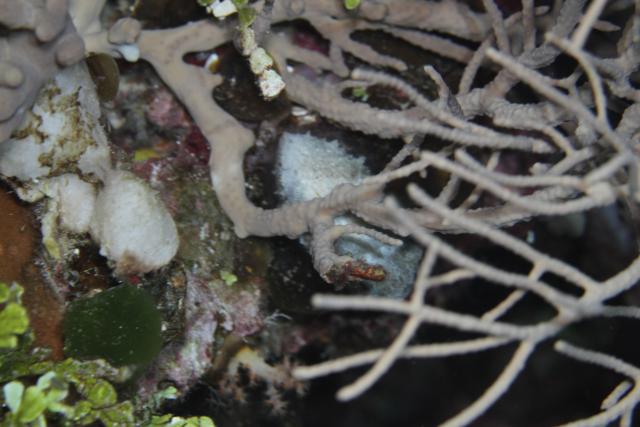
Technical Data: Canon EOS 7D, Canon EF 100mm f/2.8L Macro IS USM, 1/12th sec at f/8. Image Stabilization on. ISO 400 (Auto). Ikelite Housing and Port with Ikelite DS161 Strobe in TTL Mode. No post production.
Honestly, it took me a few seconds to realize what I was looking at - both out of sheer excitement and a bit of confusion from the strong camouflage. In the middle of both of those photos, there is a small white-ish cuttlefish. I apologize for the terrible photos - they're the best I got. It was dark, my pulse was racing, and I wanted to get some shots fired before it disappeared - which it did... only 7 seconds after we found it!
In the first shot, you can see the cuttlefish more exposed through the coral, but camera movement caused a terrible amount of ghosting. You can make out the main body and the large round eyes on the head, and the short tentacles curled up in front of the face. On the second shot, things are a bit more crisp (though still somewhat blurred) and shows a bit more of the skin texture (cuttlefish are able to change their skin texture at will for camouflage), but is more hidden behind the coral.
I'm not 100% sure, but the species might be a Crinoid Cuttlefish (Sepia sp. 2) or a baby Broadclub Cuttlefish (Sepia latimanus). The Crinoid species only get to about 2 inches full grown, whereas the Broadclub - the more common for this area - can grow to 20 inches. Either way - crinoid or baby - this little guy was quite the find! Certainly something fairly rare to see. And obviously, fairly hard to photograph.
Regardless, a mere seven seconds that I will remember for the rest of my life. I might not have captured the best photos with my camera, but I certainly recorded the image in my brain! Which is something that you need to remember to do as a photographer. Sometimes it is the photo that got away that we remember the best and means the most to us. Especially when it drives us to get out there and try for another...
... which I hope I get to do sooner rather than later.
- Bill
Home Decorating
ktuli — Thu, 02/24/2011 - 22:06
After our trip, Anya said that she wanted to do some redecorating in our living room. So we selected twenty of our favorite underwater photos from the trip and bought a bunch of frames of various sizes, and sent out to Adorama Pix for some prints.
This isn't the first time we've done this. Our bedroom has a set of seven photos taken at Cape Hatteras, our upstairs "office" has eight photos from various zoos we've visited, and Anya's craft room/our den has a set of five photos from random locations (several from different conservatories). But this is certainly our most ambitious such project.
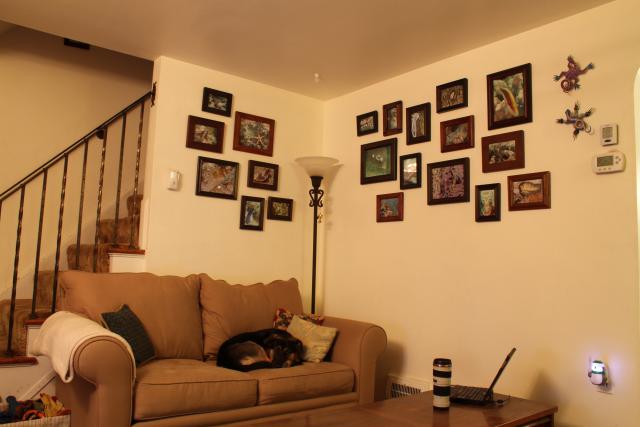
You'll have to excuse the yellow cast to the photo - I always forget how bad the one lamp in the room messes with the white balance on my camera. Also, if you look closely, you can see our younger puppy - Luca, and next to my laptop is my Canon Thermos Mug.
It really is nice to have these photos adorning our walls. They're constant reminders of the wonderful experiences on our trip, and inspiration to get out and continue creating photographs like this!
- Bill
Wakatobi: Nudibranch & Flatworm Super Assortment
ktuli — Wed, 02/23/2011 - 21:07
As I said before, one of my favorite critters from Wakatobi were the nudibranchs and flatworms.
In rough terms, they both fall under what most people would call sea slugs. The main difference between the two are that nudibranchs have antennae called rhinophores and most have external gills, whereas flatworms do not have the rhinophores (though some like the Tiger Flatworm and Linda's Flatworm below adjust their head shape to fake them) nor any external gills.
Regardless, they're cool little things... take a look (mouseover the thumbnail for the larger view)
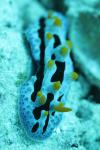 |
Sky Blue Phyllidia (Phyllidia coelestis) |
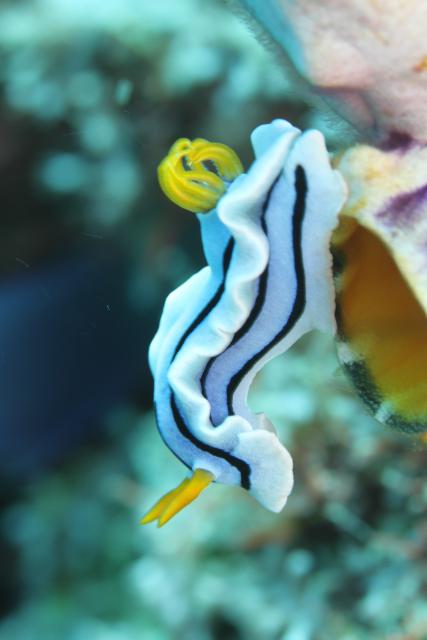 |
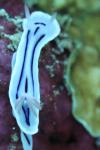 |
Willan's Chromodoris (Chromodoris willani) |
|
 |
Elisabeth's Chromodoris (Chromdoris elisabethina) |
|
 |
Racing Stripe Flatworm (Pseudoceros bifurcus) |
In reality, these are pretty tame looking nudibranchs, so I'm looking forward to another trip back to find more! I think if my count is correct, I photographed thirty-five different individuals (in nineteen dives!) consisting of four different species of flatworms and fifteen different species of nudibranchs.
So cool!
- Bill

